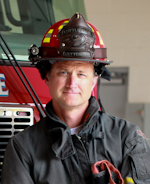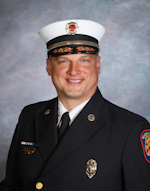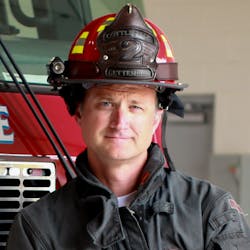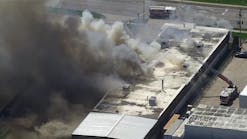First Due: Three Considerations for Warehouse Fires
As we look across the American horizon, we see warehouses. They serve as hardware stores, big box retailers and distribution facilities. Though the number of warehouse fires declined over the past 30 years, the dollar value loss rose drastically.
Significant U.S. warehouse fire losses occurred in 2022. Some businesses chose not to rebuild. These incidents are high stakes for the companies, the employees, firefighters and communities.
Cubic footage, not square feet
Warehouse facilities can range from a few thousand square feet, to several hundred thousand, to more than one million square feet. One issue that the fire service has when it comes to a warehouse facility is two-dimensional thinking, given that warehouses often are referenced by square footage.
We must think three-dimensionally in terms of these complex facilities. Look at cubic feet of space. That gives a better picture of the container, fuel packaging and space that products of combustion occupy.
Three considerations
A first-arriving company to a confirmed working fire must:
Reference the preplan. Preplans cover the building, its access points, water supply, fire protection systems and facility hazards. They must be easy to reference and read but aren’t a step-by-step manual for mitigation.
Fighting a warehouse fire isn’t scalable, as fighting a fire in residential structures is. Even though houses come in various shapes and sizes, our experience as firefighters allows us to quickly scale operations based on current conditions. This doesn’t translate to warehouse incidents. Pre-incident walk-throughs and pre-incident plans are imperative for succes.
Support the fire sprinkler system. The fire sprinkler system is our greatest chance at saving the structure. Initial efforts must support the system. This includes supporting the water supply to the sprinkler system.
Remember, the system knows the fire location and has been controlling the fire prior to your arrival. Visibility might be extremely poor, but members must resist shutting down the system too early. Yes, the system challenges interior firefighting efforts because of lazy smoke and sprinkler discharge spraying firefighters, but sprinkler impairments and premature shutdowns can result in catastrophic losses.
We aren’t doing damage-prevention by shutting down sprinklers. Smoke can create damage that goes beyond what’s caused by the water from the sprinkler system. Firefighters must remember that the fire department connection (FDC) is plumbed higher than the riser shut-off. Even when the sprinkler valve is closed, a pumper can supply water to the system.
Think big from the start. Initial response to a reported fire must consider facility size. For communities that have limited water supply, request the appropriate number of tankers to fulfill the water supply plan. Once a fire is confirmed, initial companies must request additional alarms to support firefighting efforts. Depending on how deep the fire is in the facility, it might take several companies to place a single line into service much less support sprinkler systems, establish water supplies, conduct search operations and provide roof reports. These incidents can go on for days.
Scene layout must allow for apparatus refueling.
Life safety
Warehouses often are challenging for occupant accountability. Nevertheless, they have a very small civilian fatality rate. However, there have been repeated instances of firefighter fatalities. Incident commanders must know that the life safety issue often is primarily firefighters who operate inside of the building.
The broadest of ramifications
A warehouse might be the core of the community’s existence, representing jobs and income. A loss of the facility might be more than a building; it might be the lives of the occupants or firefighters and the livelihood of the community.
Brian Gettemeier will present “Apparatus Operators’ Role in a Safe & Efficient Fireground” at Firehouse Expo. He and Tim Frankenberg will co-present the Pre-Conference Workshop “Big Buildings, Little Fires, Big Problems: Emergency Response to Big Box Stores, Large Warehouses & Distribution Centers.” To register, visit firehouseexpo.com.

Brian Gettemeier
Brian S. Gettemeier has been in the fire service for 31 years, the past 28 years as a career firefighter with the Cottleville Fire Protection District of St. Charles County, MO, where he serves as an engine company captain. He is a member of St. Louis Metro Urban Search and Rescue Task Force 1. Gettemeier is a second-generation firefighter. He has a bachelor’s degree in fire service management from Southern Illinois University and holds numerous state certifications. Gettemeier teaches all-hazard classes for numerous municipal and industrial organizations throughout the states of Missouri and Illinois. He presented at Firehouse Expo multiple times.

Tim Frankenberg
Tim Frankenberg has been in the fire service for 27 years, serving the past three as fire chief of the Washington, MO, Fire Department. He has a bachelor’s degree in fire protection and safety engineering technology from Oklahoma State University and a master’s degree in management and leadership from Webster University. Frankenberg is a Certified Safety Professional and a Certified Fire Protection Specialist. He is employed by Ameren Services as a fire protection engineer with oversight of fire protection specification, installation and maintenance for the electric and gas utility throughout Illinois, Iowa and Missouri. Frankenberg also teaches driver/operator, fire protection systems and firefighter electrical safety throughout Missouri.






